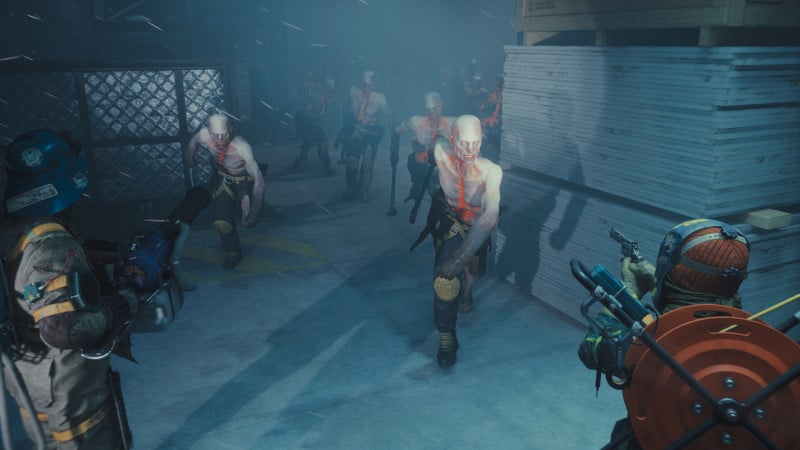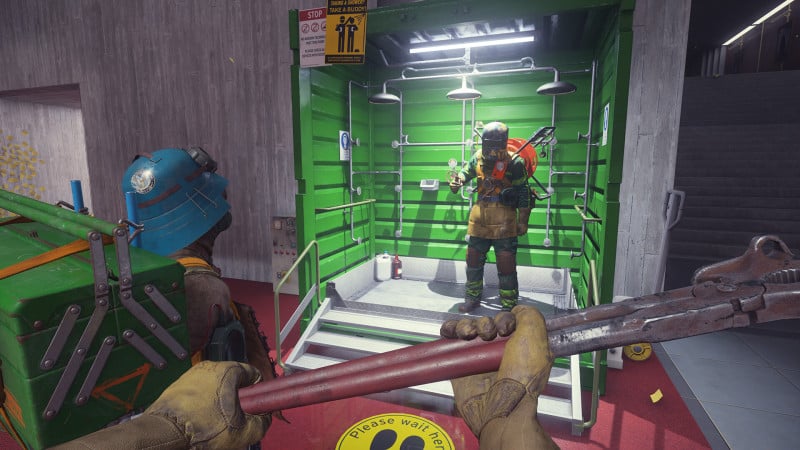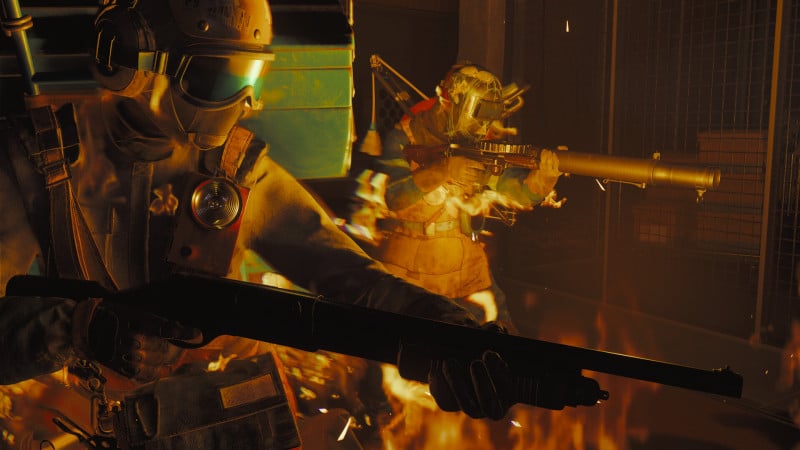FBC: Firebreak Review – Held Back By Red Tape
FBC: Firebreak launched roughly two months ago to little fanfare and mixed reviews. At the time, I had written a review of my own, singling out the game’s slow progression as its main failure, but Remedy released a new update just hours before I posted my review, rendering my verdict obsolete. The patch did improve things enough to smooth over my biggest issues with the game, but didn’t do enough to turn a mediocre experience into anything more.

In FBC: Firebreak, a multiplayer spin-off of Remedy’s acclaimed Control, you play as a Firebreaker, a volunteer worker in a haunted bureau of the government tasked with clearing out the Hiss, a malevolent force that possesses people and corrupts the building with mundane-looking powers. Paper Chase, for example, has the players clearing thousands of yellow sticky notes off the walls of an office space. If you don’t keep your distance, a swarm of sticky notes will swallow you whole and turn you into a sticky note-clad monster. These missions, known in the game as “Jobs,” are repeatable tasks you’ll complete over and over again to level your character up. There are five now, with more to come in future free updates.
To complete these jobs, each Firebreaker has a loadout of one gun, a grenade, a selection of perks, and a crisis kit, a set of tools you can use to complete tasks and to fight off the Hiss. Guns feel unremarkable, if a bit weak, but crisis kits are where the game really comes into its own. The splash kit comes with a water cannon, the jump kit comes with an electric tool called the Electro-Kinetic Charge Impactor, and the fix kit comes with a giant wrench. Each kit also comes with a deployable, which is an item you can place in the world to assist in combat, and an altered augment, an extremely powerful ability that charges up over time. These kits are the game’s defining feature, and I had the most fun playing in a balanced group with one of each.

Each job has three clearance levels, which grant players access to slightly harder areas of the level. Ground Control, for example, has players load radioactive pearls into a cart that they push through each area. Clearance level two opens a door to a larger area with more pearls to collect, while clearance level three opens a door to a rocket to launch the leech pearls into the atmosphere. Each job also always takes place on the same map. The intent is to offer handcrafted experiences for each level, but it gets old after just a few runs, and I’d easily trade that handcrafted feel for more variety.
Jobs can be completed solo, but it’s abundantly clear the game is designed to have three players, one with each kit. The interactions between kits can be fun, like how the jump kit’s electricity is more effective after the splash kit douses enemies, but the main incentive is the game’s many tasks needed to complete each mode. While any player can repair broken machinery or jump-start fuses, the fix and jump kits can do each respective task with a few clicks of a button, while players with other kits have to do a bumper-based minigame instead. Meanwhile, the splash kit can clean hazards off of allies and heal with its deployable, so it’s not only nice to have a team of three – it’s basically a balance requirement.

Solo games are especially annoying, as having just one of the kits dooms you to doing each tedious minigame yourself or being more vulnerable to damage and negative status effects. Unfortunately, matchmaking is also a pain. Lobbies are selected based on difficulty, not job or clearance level, so there’s a good chance that when you join another player, you’ll be playing a game you aren’t interested in. I’ve never had success hosting a party of three, usually getting one other player at best, and often losing them after completing a job or when a third fails to appear. And on the rare occasions I’ve been in a full lobby (hosted by someone else), I’ve not only never had all three crisis kits represented, but there’s no text or voice chat to ask someone to switch. Even then, that might not solve the problem, since crisis kits have to be upgraded over time, and the kit missing might be one nobody has upgraded.
The ideal way to play FBC: Firebreak is as a group of three friends on a Discord call, coordinating moves and synergizing kits, which is a decent way to spend an afternoon. Unfortunately, it’s difficult to achieve anything similar while matchmaking, and even then, there’s just not much to do. On paper, I don’t mind the lack of story, competitive modes, or procedurally generated content, but when the gameplay isn’t engaging or interesting enough to keep me playing, the lack of other game modes is especially glaring. Recent updates have eliminated the tedious grind for upgrades, but the lack of a strong foundation underneath leaves FBC: Firebreak with too little, too late.


Comments are closed.